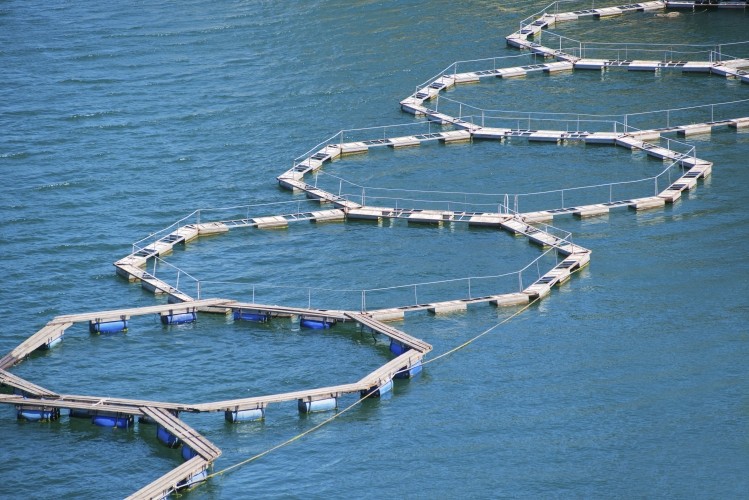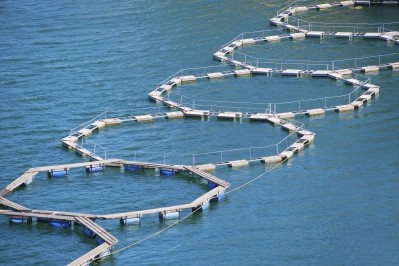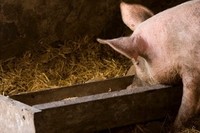What do probiotics and prebiotics offer farmed snakehead?

An international team of researchers in Malaysia and the US examined the use of prebiotics and probiotics in the diets of farmed snakehead (Channa striata) fingerlings. The group published their results in the journal Aquaculture.
The goal was “to determine the influence of selected dietary prebiotics and probiotics on growth performance, feed utilization and body indices; nutrient digestibility and digestive enzyme activities of C. striata fingerlings and the duration of their effectiveness for a specified period of post-feeding without any supplementation,” they said. “The response of the fish innate immune system with respect to the mRNA expression of the TGF-β1 and NF-κ B genes to the dietary intake of the selected probiotics and prebiotics was also investigated.”
The use of both prebiotics or probiotics in the diets led to better growth performance, nutrient digestibility and improved expression of immune regulatory genes, said the researchers. However, fish getting probiotic supplements, especially L. acidophilus (LBA), showed greater improvement.
“The results obtained from the present study have shown that supplementation with LBA is best for growth and the expression of immune regulatory genes of C. striata fingerlings regardless of feeding duration unlike the prebiotic treatments whose early differences no longer became significant by the time feeding was extended to 16 weeks,” they said.
Why prebiotics and probiotics?
Snakehead are a farmed fish popular in Asia and have seen production amounts increase from 16 tons in from 1998-2000 to about 42 tons in 2010-12, said the researchers. But the practice also has had problems with poor water quality and disease.
“For decades, disease in farms are managed through the widespread and often uncontrolled use of antibiotics, which in turn led to the advent of antimicrobial resistant pathogens, reduction in beneficial microbiota in the gastrointestinal (GI) ecosystem, including the accumulation of residual antibiotics in fish muscle making it unsuitable for human consumption,” they said.
Efforts in aquaculture now are exploring alternative ways to manage fish health, like use of dietary supplements to boost immune funtion or growth, they said. These compounds include prebiotics, probiotics, symbiotics, phytobiotics and other feed supplements.
“Probiotics and prebiotics are bioactive components that provide not only nutrients, but microorganisms, oligosaccharides and polysaccharides, which enhance growth performance subsequently, [and] increase fish production,” said the researchers. “Probiotics are live microorganisms like bacteria, or live yeast (Saccharomyces cerevisiae), which have been proven to have beneficial effects on fish growth by improving its intestinal microbial balance.”
Prebiotics can be used to improve metabolism of beneficial bacteria, like lactobacillus, along with nutrient digestibility and to boost expression of immune regulatory genes, they said. They are also used to improve water quality.
Study details
In the experiment, 10,000 juvenile snakehead were given one of five experimental diets, said the researchers. The diets included a control diet with 40% protein and 12% lipid and that diet supplemented with one of three commercially available prebiotics – 0.2% β-glucan, 1% galacto-oligosaccharides, 0.5% mannan-oligosaccharides, – or one of two commercial probiotics – 1% live yeast (S. cerevisiae) and 0.01% L. acidophilus powder.
For the first phase of the feeding trial, the six diets were fed for 16 weeks, they said. In the second phase, all fish were given the control diet for eight weeks to check for lasting influence.
Fish weights were recorded every 14 days, starting in week four, for the first 16 weeks and then were taken every seven days for the next eight weeks, they said. Relative growth (RG), specific growth rate (SGR), survival rate (SR), protein efficiency rate (PER) and the food conversion ratio (FCR) were established along with protease, amylase and lipase enzyme activities and the expression of immune-regulatory genes also was examined.
The relative protein digestibility (RPD) was determined from fish collected at the end of phase one and two of the experiment, they said. Sample fish also were collected at the end of both phases to calculate hepatosomatic index (HSI), visceral somatic index (VSI) and intraperitoneal fat (IPF).
Results
Overall, fish getting an experimental diet saw improved growth, feed utilization and survival when compared with control fish in first phase, said the researchers. Both growth performance and feed utilization declined in phase two, but supplemented fish continued to outperform the control.
In phase one, fish getting additive probiotics outperformed those getting a prebiotic, and, fish getting the LBA supplement had the best RG and SGR, they said. “At the end of the Phase 2, highest RG (606.24%) and SGR (1.16) were observed in the LBA feeding trial, followed by yeast (RG = 528.44%; SGR = 1.09), β-glucan (RG = 367.91%; SGR = 0.92), MOS (RG = 342.12%; SGR = 0.88), GOS (RG = 302.50%; SGR = 0.83) and control (RG = 246.86%; SGR = 0.74),” they added.
FCR and survival rate also was improved for fish on supplement diets, with the best result for fish getting additive LBA, they said. FCR values did increase in phase two, but remained lowest for LBA fish.
“The trend in protein efficiency ratio (PER) values of fish fed with the prebiotics and probiotics feed supplements was the reverse of FCR values,” said the researchers.
Probiotic supplements improved RFP, amylase, protease and lipase activities and immune-regulatory gene expression compared to prebiotics and control, especially for the LBA group, they said.
VSI and HSI, IPF improved in phase one for supplemented fish, but declined in phase two and VSI results were similar for all diets after eight weeks, they said. The control group had the highest IPF results in both phases.
Source: Aquaculture
Title: Dietary prebiotics and probiotics influence growth performance, nutrient digestibility and the expression of immune regulatory genes in snakehead (Channa striata) fingerlings
DOI: 10.1016/j.aquaculture.2016.03.041
Authors: Mohammad Munir, Roshada Hashim, Yam Hok Chai, Terence Marsh, Siti Azizah Mohd Nor














